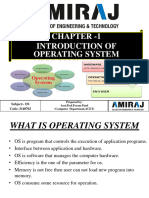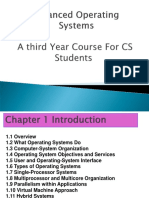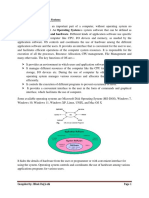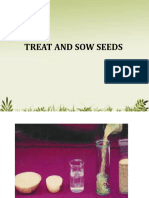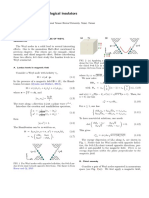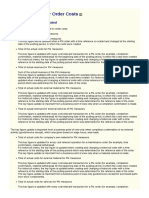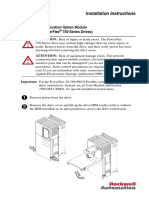0% found this document useful (0 votes)
27 views3 pagesAn Operating System Unit 1
An Operating System (OS) serves as an intermediary between users and computer hardware, managing resources and enabling applications to run. It includes various types such as Batch, Multi-programmed, Time-Shared, and Mobile OS, with key functions like process, memory, file, and I/O management. System calls provide the interface for programs to access OS services, facilitating operations like process control and file management.
Uploaded by
valatesanchitaCopyright
© © All Rights Reserved
We take content rights seriously. If you suspect this is your content, claim it here.
Available Formats
Download as DOCX, PDF, TXT or read online on Scribd
0% found this document useful (0 votes)
27 views3 pagesAn Operating System Unit 1
An Operating System (OS) serves as an intermediary between users and computer hardware, managing resources and enabling applications to run. It includes various types such as Batch, Multi-programmed, Time-Shared, and Mobile OS, with key functions like process, memory, file, and I/O management. System calls provide the interface for programs to access OS services, facilitating operations like process control and file management.
Uploaded by
valatesanchitaCopyright
© © All Rights Reserved
We take content rights seriously. If you suspect this is your content, claim it here.
Available Formats
Download as DOCX, PDF, TXT or read online on Scribd
/ 3































